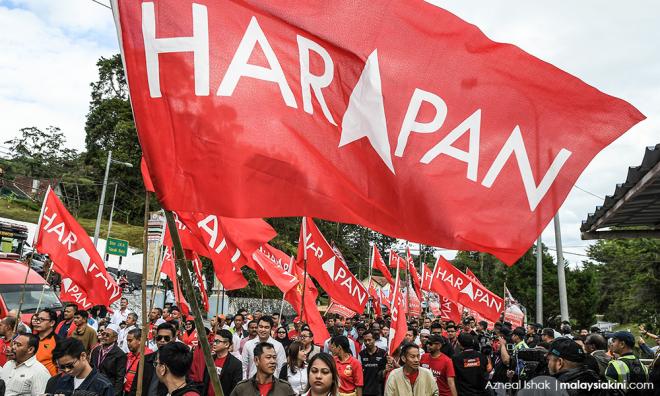Published by Malay Mail & The Malaysian Insight, image from Belt & Road News.
In moving towards the Fourth Industrial Revolution (4IR) – which is none other than the digital “quantum leap” – we are not only bracing for economic transformation but preparing for the next leap involving the whole of society as well.
The 4IR is not just going to change the way we improve our business processes but also increasingly in seamless ways converge and bring back together the virtual or digital space with the physical space or the cyber physical systems (CPS).
Hence, the term “Society 5.0” as coined in the 5th Science and Technology Basic Plan drawn up by the Cabinet Office of Japan, which defines Society 5.0 as “a human-centred society that balances economic advancement with the resolution of social problems by a system that highly integrates cyberspace and physical space.”
Society 5.0 could well be regarded as the culmination of humanity’s progress, finally, from the information society (Society 4.0), industrial society (Society 3.0), agrarian society (Society 2.0), and all the way back to the hunting society (Society 1.0).
My CEO, Datuk Dr Rais Hussin, in his article entitled, “Malaysia 5.0: A National IR4.0 Policy,” has highlighted how “Covid-19 has accelerated the migration of society from physical infrastructures onto digital infrastructures, but Society 5.0 holds the promise to bring these back together through the use of IR4.0 technologies such as artificial intelligence (AI), internet of things (IoT), blockchain and financial technology (fintech).”
He has called for a comprehensive and all-encompassing, society-wide National 4IR Policy. In other words, with the 4IR, things are coming full circle.
So, when we move up in economic terms, we are inevitably restructuring and reshaping our socio-economic way of life in such a way as to merge and organise and revolve everything together on the basis of digitalisation.
The 4IR will not only transform the workplace and factory plants, but also our schools, universities, hospitals and homes and just about every aspect of our life in very advanced and sophisticated ways, as never before.
This means the digital processes are not only limited to a “one-way street” whereby data fed into the digital system is processed there and then, including the output and action — what some experts termed as “digitisation.”
Now with 4IR, the same data reverts back to the human user of another digital tool or machine — which is where the whole digital process then ends.
A concrete example would be the AI-driven cloud-based traffic management solutions system as pioneered by Alibaba Cloud in collaboration with Sena Traffic Systems Sdn Bhd for use in Kuala Lumpur city centre.
With the convergence and combined deployment of AI and Big Data in the command and control centre, global positioning satellites (GPS), drones and smart CCTV cameras, this traffic system would be able to make continuous real-time forecasts and predictions of traffic flows.
We would then be able to make informed decisions based on accurate real-time information and take steps to plan arrival time, avoid congestions by taking appropriate routes within the city centre, and enhance our navigational experience.
This system is also able to automate changes in the traffic lights so that ambulances and fire engines can rush to the scene of an incident without interruption, accelerating arrival time by as much as 50 per cent.
Currently, the government has put in place a national strategy to promote the 4IR in the economic realm — Industry 4.0 Policy — spearheaded by the Ministry of International Trade & Industry (Miti) in what is a concerted and comprehensive transformation agenda for the manufacturing sector and related services.
Manufacturing and SMEs are being incentivised and encouraged to go digital which will see their operations and activities undergo a makeover by adoption of technologies and systems that blurs the boundary between the digital/virtual and physical.
In fact, we are seeing additive manufacturing and 3-D printing, robotics, bots embedded in computer-numerical control (CNC) machines, nanotechnology and advanced simulation for precision tooling, already unleashed from their application to industries and businesses and “spilled over” into other sectors such as healthcare, agriculture, and education.
Hence, Malaysia is not far behind the more advanced societies.
We are now also experiencing the rise of the low-touch economy, increasing usage of contactless and cashless payment methods such as QR scanning, and the regularisation of a culture and habit of working from home (WFH).
Soon, we can expect that there will also be a National IR4.0 Policy or National 5.0 Strategy that will cover nearly all aspects of our way of life set against the backdrop of the introduction of this new normal as occasioned by Covid-19.
Such a policy would complement and go further than the existing Smart City Framework under the initiative and oversight of the Ministry of Housing & Local Government.
For now, the Smart City Framework could be said to embody and encapsulate an incipient and embryonic policy for Malaysia 5.0, as it envisions communities integrated with sustainable technologies such as 5G connectivity, autonomous public transport, drone delivery, energy-efficient buildings, smart treatment of water and waste management that can improve the quality of life of the citizens.
The Smart City Framework is expected to be operationalised under the 12th Malaysia Plan, as is the Shared Prosperity Vision (SPV) 2030 which is to be driven on the back of digitalisation in bridging the economic and socio-economic divide and gaps.
So, not only is the virtual and physical rapidly converging. But the convergence and overlapping are also happening at rapid pace between the impact of digitalisation on the economic sphere with the impact of digitalisation on the socio-economic dimensions.
Thus, we are well on the way towards Malaysia 5.0. The only question is: When will we have arrived?
Jason Loh Seong Wei is Head of Social, Law and Human Rights at EMIR Research, an independent think tank focused on strategic policy recommendations based on rigorous research.

